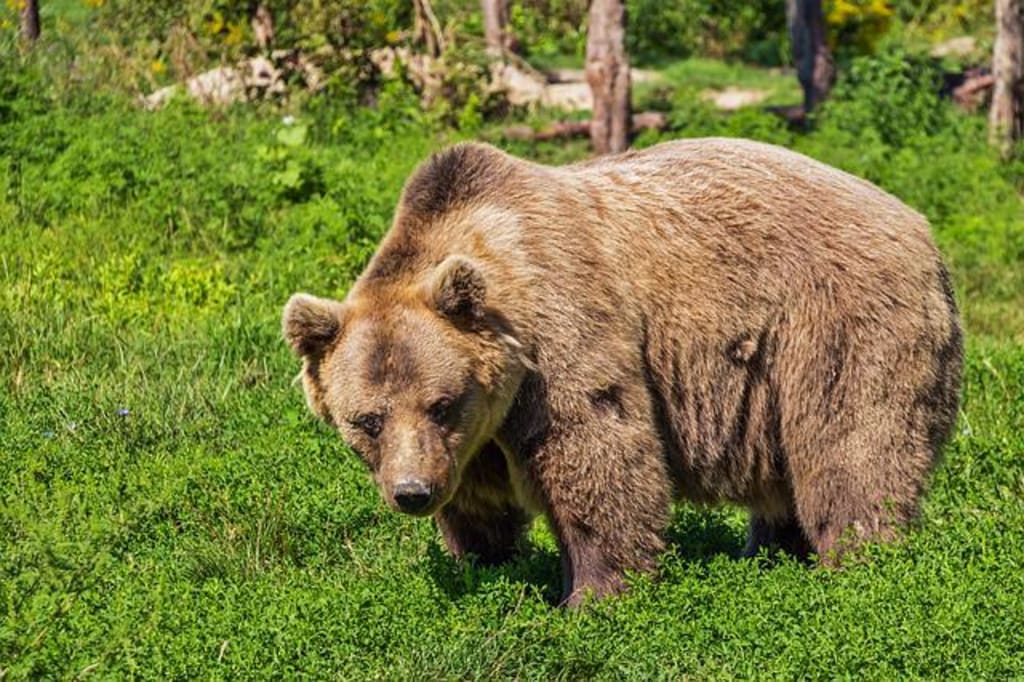
There is really only two things that will really get you into trouble with a normal bear: getting between it and food and getting between a bear and its offspring. Avoid those two situations, and in most cases, bears don’t want to confront you anymore than you want to confront them.
Barring the polar bears in Antartica, there are basically two types of bears: black bears and brown bears. The difference is really more identifiable by size rather than color since black bears can be black, brown, or reddish brown. Brown bears (i.e., “grizzlies”) are generally brown, but much larger; brown bears are also much more dangerous and aggressive.
Here are a few tips on how to traverse bear country and minimize your chances of bear attacks. Most importantly, keep your eyes open as to what is around you and what areas you are entering. If you see bear prints or droppings or smell decaying food or see dead animals or baby bears … stay out of that area. If you have to go through that area, be very wary and try to see any bears in the area. If you do see a bear … especially cubs … go out of your way to avoid being between the bear and its food or cubs.
When you are going into bear country, take a few flares with you and keep them handy. If you see a bear, be prepared to light the flares and hold them up between you and the bear if the bear appears to be aggravated at you. Bears can’t see that well, but they are attracted to motion and they can use their nose for “direction-finding” to locate you. If the bear stands up and sways his head and upper body from side to side, he is trying to locate you by your smell. Take that as a sign of aggression.
If the bear approaches you, you can’t outrun them … they can run about 35 miles per hour and the fastest humans run around 12 maybe 13 miles per hour in a sprint … so don’t run, yell, or scream. Instead, keep your head tilted downward in a submissive position, but keep your eyes on the bear; if you need to communicate with others, keep your voice low. Back away from the approaching bear. The idea here is to appear non-threatening. If the bear keeps coming, you may need to light the flares.
If the bear attacks, roll on your stomach and clasp your hands behind your neck. “Play dead” until the bear leaves the area. If it becomes more aggressive and ferocious, then fight back with all your strength and try to get away.
Tips To Avoid Attracting Bears:
1. The most important tip is to go out of your way to NOT attract bears. So you should never store food or trash in or near your camp. Store it at least 150 feet away and preferably hoisted over a tree limb at least 15 feet off the ground and at least five feet away from the tree trunk. Use a tree too big for a bear to knock over and too small for a bear to climb.
2. Cook your food at least 150 feet away from your camp or sleeping area as well. Clean up thoroughly after cooking with the intent to wash away any smells. Burn or bury any leftovers and dispose of your cooking and clean up water away from your camp as well.
These first two tips will also help keep bugs away from your camp.
3. In bear country, don’t use citronella candles; the scent attracts bears.
4. Don’t keep scented toiletries such as toothpaste, deodorant, soap, lip balm, etc. in your tent, and it’s best not too use deodorant, perfume, or scented lotions when you are in the wilderness. These all attract predatory animals.
5. “Don’t feed the bears” or put food out trying to catch a glimpse of a bear. They can become aggressive when there is no more food or if there are multiple bears coming for the same food.
Finally, when you are hiking through areas where you suspect or know bears live, make lots of noise as you move … laugh, talk, sing, clap your hands, and/or clang something … these sounds warn animals and they will generally move away rather than encounter you.
WARNING: The best survival technique is to avoid getting into a dangerous situation in the first place. This article presents one thing you could do if the situation allows. There is no guarantee if will work every time in every scenario. Please do not put yourself in such a risk situation to “test” this technique.
About the Creator
Enjoyed the story? Support the Creator.
Subscribe for free to receive all their stories in your feed. You could also pledge your support or give them a one-off tip, letting them know you appreciate their work.






Comments
There are no comments for this story
Be the first to respond and start the conversation.